![]() Forests are the Earth’s lungs. They’re home to the densest concentrations of land animals. And they feed, clothe, house, and help provide us with many products. Many of the world’s most revered and sacred places are forests. Forests are where many of our ancient ancestors lived, as well as the species that have come before us.
Forests are the Earth’s lungs. They’re home to the densest concentrations of land animals. And they feed, clothe, house, and help provide us with many products. Many of the world’s most revered and sacred places are forests. Forests are where many of our ancient ancestors lived, as well as the species that have come before us.
Today forests are under siege. Even protected land is at risk from changing climates, pollution transported via water or air, and bad actors without our forests best interests at heart. Yet today we know more about the proper management of forests than ever in the past. This paradox in which we’re losing our forests at a rapid pace while knowing how to preserve them better than ever, places foresters and those with forestry degrees in particularly unique positions.
Forests that past generations took for granted are today the center of an epic struggle, to preserve beloved landscapes, save vital ecosystems, and continue to produce the many necessary goods that come from forests.
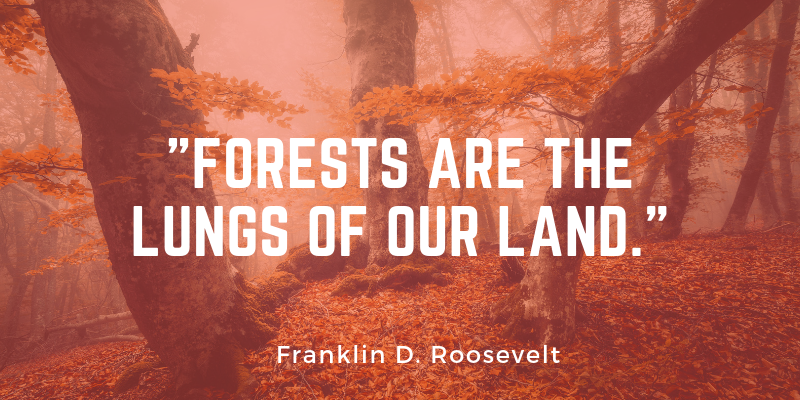
Here at DegreeQuery, we’ve coached countless students on how to choose the right degree for them. And we’re proud to present our latest guide on forestry careers and degrees. If you feel like you feel the call of the woods, be sure to keep on reading our guide on what you can do with a degree in forestry!
Table of Contents
- What Forestry Degrees Are Available?
- Can I Gain a Forestry Degree Online?
- How Do I Gain Admission to a Forestry Degree Program?
- What Can I Do With a Degree in Forestry?
Don’t see what you’re looking for? Be sure to check out our features, school rankings, and original research on related topics:
- 100 Most Affordable Online Graduate Schools of 2019
- 20 Best Degree Programs for Undergraduates
- 30 Great Outdoor Jobs Requiring a College Degree
- How fast can I earn a Master’s Degree in Environmental Science?
- The Top 10 “Green” Careers for Nature-Lovers
- Top 10 Highest Paying Science Careers
- Top 10 Online Bachelor’s Degree Programs in Environmental Science
- Top 15 Jobs for Adrenaline Seekers
- What Can I Do With a Land and Property Management Degree?
- What Can I Do With an Agriculture Degree?
- What Can I Do With an Environmental Studies Degree?
- What Classes Will I Have to Take for a Degree in Agricultural Engineering?
- What Classes Will I Have to Take for a Degree in Agricultural Engineering?
- What Degree Do I Need to Become a Conservation Scientist?
- What degree do I need to become an Agricultural Engineer?
- What degree do I need to become an Environmental Engineer?
- What is a Bachelor’s Degree in Sustainability?
- What Is the Difference Between a Degree in Agricultural Engineering and a Degree in Environmental Engineering?
- What is the Difference between a Degree in Environmental Science and Environmental Engineering?
- What Master’s Degrees Should I Consider If I Want to Help the Environment?
What Forestry Degrees Are Available?
Forestry degrees are traditionally offered at the associates through doctoral levels.
Associates in forestry are typically technical degrees in forestry technology. These degrees aren’t able to spend as much time exposing students to natural sciences or research methods, though they can help to get you an entry-level job within a forestry industry.
Associate of applied science degrees in forestry technology typically require 2 years for completion, and are comprised of 60 credit hours. While there are not as many natural science requirements as in a bachelor’s degree in forestry, forestry technology degrees still require students to gain a general grounding in a wide range of topics through general education requirements.
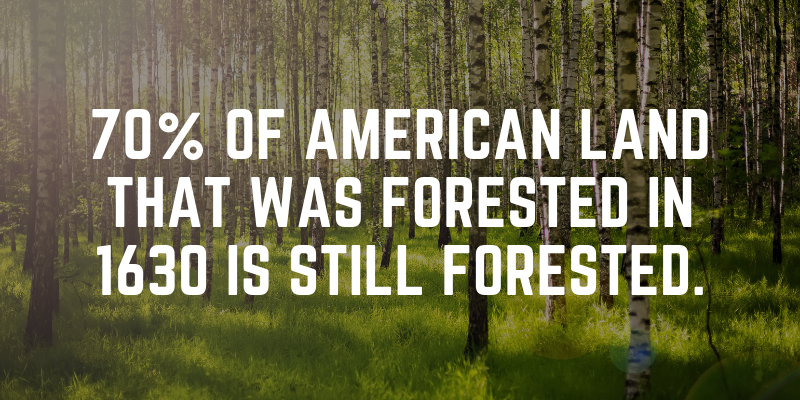
An associates in forestry technology requires general education courses that are typically similar to the following:
- English
- Physical education
- A Social Science like Economics or Psychology
- Religion, Philosophy, or Ethics
- Intro to Computing/Data Literacy
- A foreign language
- Mathematics
- A Natural Science like chemistry, biology, or geology
Upon completion of some general education requirements, students may begin on major courses. Within a forestry technology degree these courses will likely include something like:
- Foundational Botany
- Dendrology
- Forest Mensuration I and II
- Surveying Forests I and II
- Photogrammetry
- Forest Products
- Intro to GIS
- Management of Wildlife
- Forest Ecology
- Forest Recreation
- Silviculture
- Timber Harvesting
- Forestry Equipment
- Forest Land Management
At the bachelor’s level, students will gain an introduction to research within the natural sciences. Typically a bachelor’s degree is the lowest level of education with which one can gain a forester job. Additionally, bachelors in forestry are perhaps the best degree for obtaining entrance to Ph.D. programs in forestry.
General education requirements are similar to those in associates-degree programs within bachelor’s, though students will likely have a wider choice of programs within each discipline required.
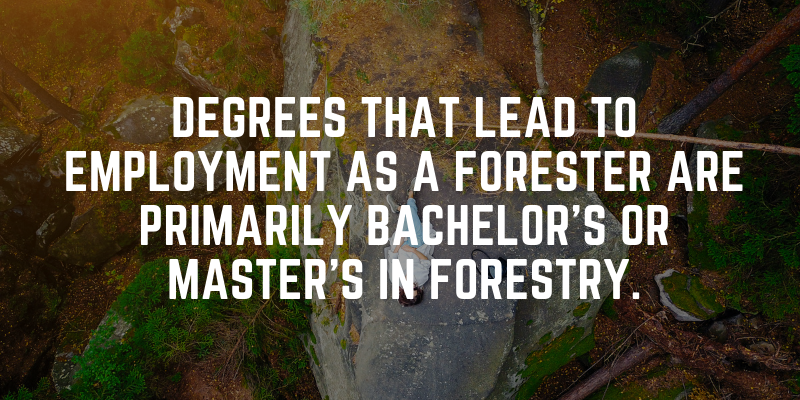
After general education requirements, bachelor of science in forestry degree seekers begin major courses. Lower level courses will likely overlap with those of an associates in forestry science, but higher level courses are available as well. Common courses pursued within a bachelor of science in forestry degree include:
- Chemistry
- Vegetation of Forests
- Field Methods in Forestry
- Dimensions of Human Involvement in Forests
- Forestry Ecology
- Silviculture
- Fire Studies and Wildfires
- Sustainable Wood Products
- Economics of Forest Management
- Policy in Natural Resources
- Data Analysis and Forestry Tools
- GIS in Natural Resources
- Biology of Plants
- Insects and Diseases of Forests and Shade Trees
- Calculus
- Statistics
- Conservation
- Ecosystem Management
- Technical Writing
- Grant Writing
- Internship
- Forestry Research Project
Related degrees at the bachelor’s level include:
- Bachelor’s in Forest Science
- Bachelor’s in Forestry and Fire Science
- Bachelor’s in Natural Resources – Forestry
- Bachelor’s in Sustainability
- Bachelor’s in Forest and Wildlife Sciences
- Others
At the master’s level, students begin to participate in original research. Some students will gain admission to a Ph.D. (doctoral) program directly out of undergraduate study. Upon completion of several years of study and a thesis, doctoral candidates can be awarded a master’s “en route” to their doctorate. For students seeking admission to a standalone master’s program, this is known as a “terminal” master’s.
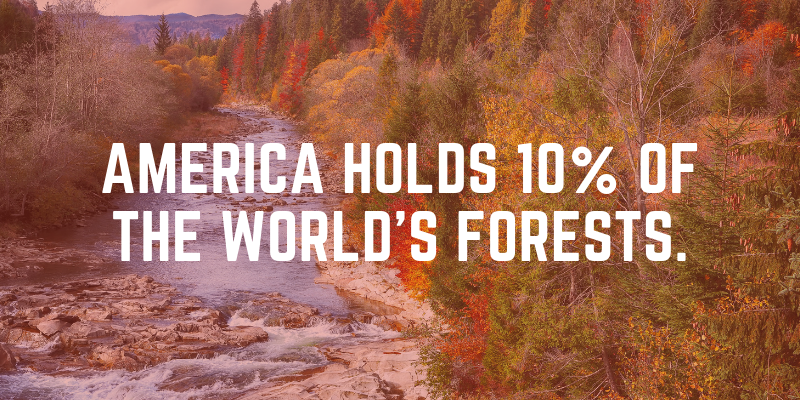
Most terminal master’s degrees in forestry offer a mix of concentration areas ranging from pure research to applied job training.
Some of the most common concentrations for master’s in forestry include:
- Science of Forest Ecosystems
- Economics and Policy of Forests
- The Human Dimensions of Natural Resources
- Bioproduct Engineering
- Tourism, Recreation, Parks, and Forestry
- Fire Science
- Ecology
Within master’s-level programs students are required to complete a master’s-level thesis. A thesis is a hundred plus page document that summarizes recent scholarship within a field and arranges these findings into an argument. A thesis is different from a dissertation in that it is not 100% original research.
Finally, at the doctoral level the most common degree related to forestry is that of a doctor of philosophy (Ph.D.) in forestry. Ph.D.’s are research degrees, as opposed to professional degrees. This doesn’t mean a Ph.D. won’t help prepare you for professional roles. Rather, it means that the central goals of a Ph.D. program include supporting doctoral candidates in the performing of original research, as well as preparing the next generation of scholars within a field.
Coursework within a Ph.D. may not significantly differ from a master’s-level program, at least at first. Students will begin by gaining a solid graduate-level foundation for forestry courses, as well as more general courses on research methods and teaching. As students progress through their course of study they then typically take courses that center around a central focus area.
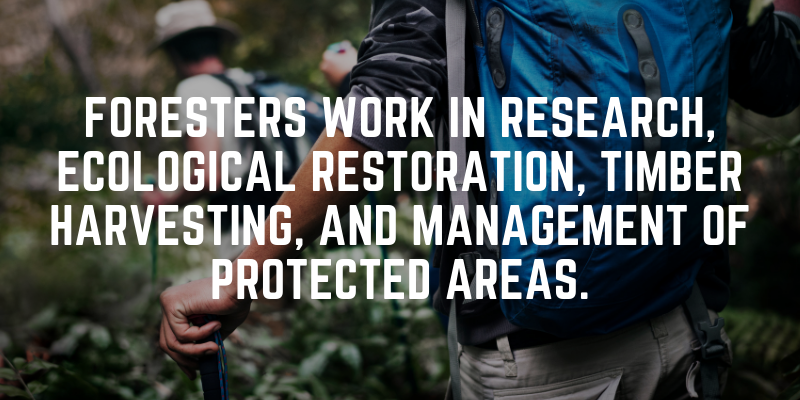
Throughout the course of a Ph.D. students will likely spend several years working on the creation of a dissertation. Dissertations are several hundred-page documents of original research. They should, theoretically, be of the quality to be accepted by a peer-reviewed journal. Upon successfully “defending” a dissertation and passing comprehensive exams, doctoral candidates are awarded a doctorate.
Can I Gain a Forestry Degree Online?
While many of the supporting science courses within forestry degrees can be taken online, a core skill set of foresters surrounds in-person identification, tracking, and management of forests. As many forestry skills are “hands on,” this means that many forestry programs rely on in-person training.
With that said, some forestry degrees are available in “hybrid” formats. A “hybrid” delivery-method degree is one in which some (or even all courses) are offered online, but some in-person meet-ups are required. Hybrid delivery can range from degree programs in which students can take a handful of courses online, to degree in which all courses may be taken online and once a semester “meet ups” are required.
How Do I Gain Admission to a Forestry Degree Program?
Admission requirements for forestry degrees are similar to admissions for other degree programs dependent on the level of schooling. At the associates level, community colleges often have “open admission” policies. These policies allow entrance into a program if students have finished high school (or hold a GED). Students may then stay in the program as long as they keep their GPA above a stated minimum.
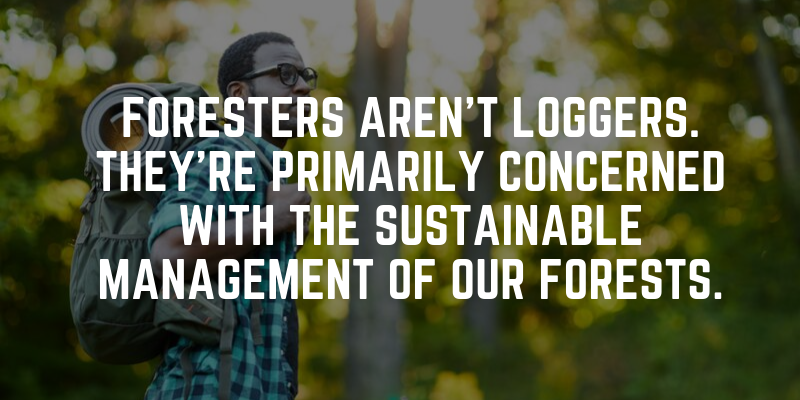
At the bachelor’s level, students typically gain admission to the undergraduate college as a whole, and then select forestry as a major. This typically involves a standardized test score such as the ACT or SAT. Additionally, students should be prepared to share resumes (if applicable), attend interviews, and write admissions essays.
At the master’s-level, programs range from nearly open admission through extremely competitive. If students did not major in forestry as an undergraduate, master’s candidates should at least have taken coursework related to the natural sciences, and preferably achieved a related degree in natural resources, fire science, botany, or agriculture. The standardized test more commonly required for admissions to a master’s in forestry is the GRE.
At the doctoral level, students should be prepared to identify a program that performs research that aligns with their interests. Furthermore, potential students should reach out to professors they wish to oversee their research. Many research professors will only oversee a handle of doctoral students’ work. And this is a key component of Ph.D programs that students should seek out information on in advance.
What Can I Do With a Degree in Forestry?
Forests are one of the most common types of wilderness worldwide. Many of our most protected natural assets are blanketed in trees. And many of our most common consumer goods can’t be constructed without natural resources that are extracted from forests. This means that there are many, many applications of forestry degrees.
Some of the most common areas of focus for forestry graduates include:
- Forest Management
- Public Policy and Conservation Roles
- Management of Public Land
- Sustainable Energy Management
- Consulting or Tree Care
- And Fire Science Roles
Forestry graduates who go into forestry management may do so for public or private organizations. Most commonly, forest management involves the sustainable development of natural resource extraction within a forest setting.
Forestry managers may be required to research the best ways to protect and extract natural resources. In the case of a forest manager who manages a wood pulp mill or similar extraction site, managers may be required to specialize in heavy equipment or mechanical issues. Other issues may include logistics, the health of the woods, and the management of personnel. The average salary for forestry managers is currently $75,000.
Many forestry graduates wish to help protect our sacred wooded places. These graduates may seek jobs in public policy and conservation roles. These roles may work for non-profits, private, or public entities. And more often than not these jobs fall into two categories: foresters who perform original research, and foresters who advocate for policy changes.
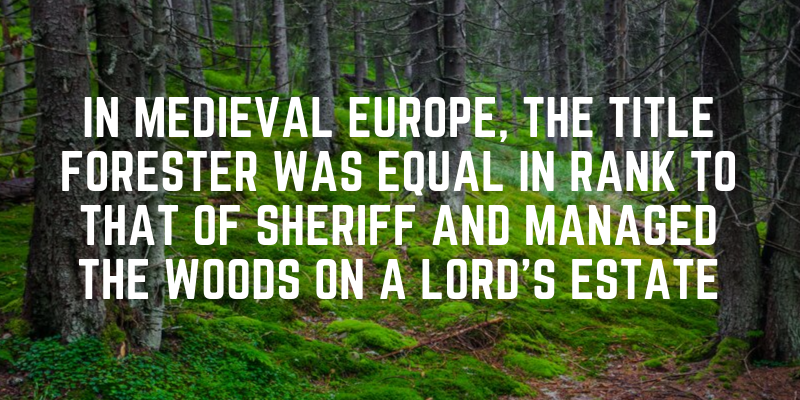
One of the most common roles within public policy and conservation forestry roles is that of research forester. These individuals may work in university, governmental, or private settings. And are oftentimes tasked with the assessment of ecological issues within a region. They may be called in as consultants when entities are dealing with land management, use of land, or building issues. Additionally, they may be called in to provide assessments of the value of a plot of land, or plans to preserve land. For foresters who work in public policy, roles may also include advocating for funding and legislation to preserve forests and wild regions.
The salary for research forester roles varies greatly by employment type, location, and seniority. With that said an average nationwide is $60,000.
Many of our largest forests are on protected, public land. This makes the job of public land manager quite an important role when looking at the entirety of forested land.
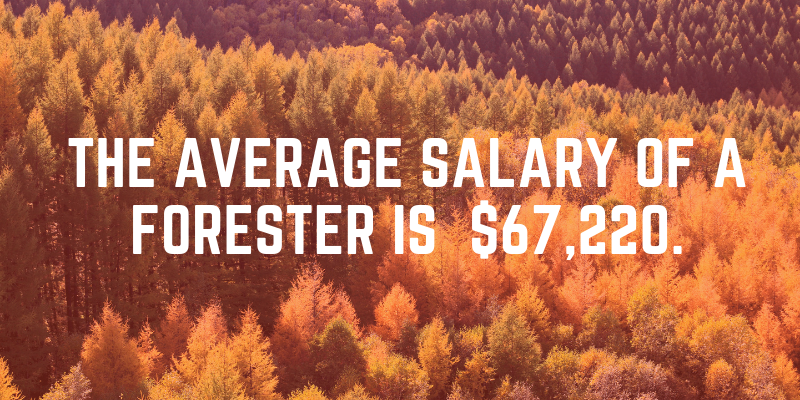
Don’t see what you’re looking for? Be sure to check out our features, school rankings, and original research on related topics:
- 100 Most Affordable Online Graduate Schools of 2019
- 20 Best Degree Programs for Undergraduates
- 30 Great Outdoor Jobs Requiring a College Degree
- The 10 Best Online Fire Science Degree Bachelor’s Programs
- How fast can I earn a Master’s Degree in Environmental Science?
- The Top 10 “Green” Careers for Nature-Lovers
- Top 10 Highest Paying Science Careers
- Top 10 Online Bachelor’s Degree Programs in Environmental Science
- Top 15 Jobs for Adrenaline Seekers
- What Can I Do With a Land and Property Management Degree?
- What Can I Do With an Agriculture Degree?
- What Can I Do With an Environmental Studies Degree?
- What Classes Will I Have to Take for a Degree in Agricultural Engineering?
- What Classes Will I Have to Take for a Degree in Agricultural Engineering?
- What Degree Do I Need to Become a Conservation Scientist?
- What degree do I need to become an Agricultural Engineer?
- What degree do I need to become an Environmental Engineer?
- What is a Bachelor’s Degree in Environmental Science?
- What is a Bachelor’s Degree in Sustainability?
- What is a Degree in Environmental Design?
- What Is the Difference Between a Degree in Agricultural Engineering and a Degree in Environmental Engineering?
- What is the Difference between a Degree in Environmental Science and Environmental Engineering?
- What Master’s Degrees Should I Consider If I Want to Help the Environment?
